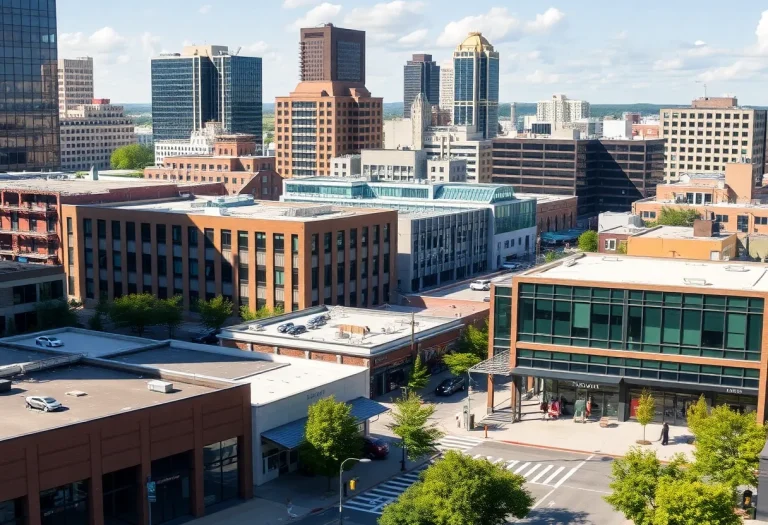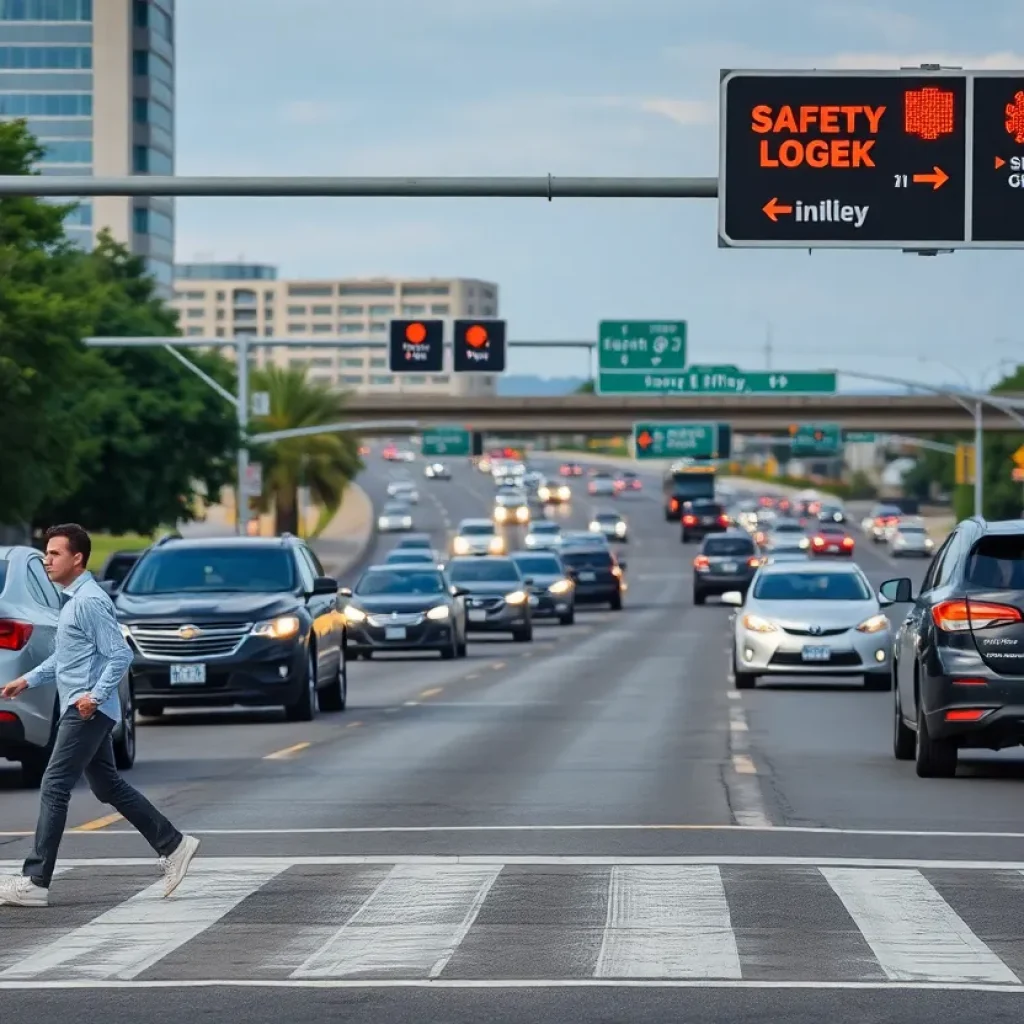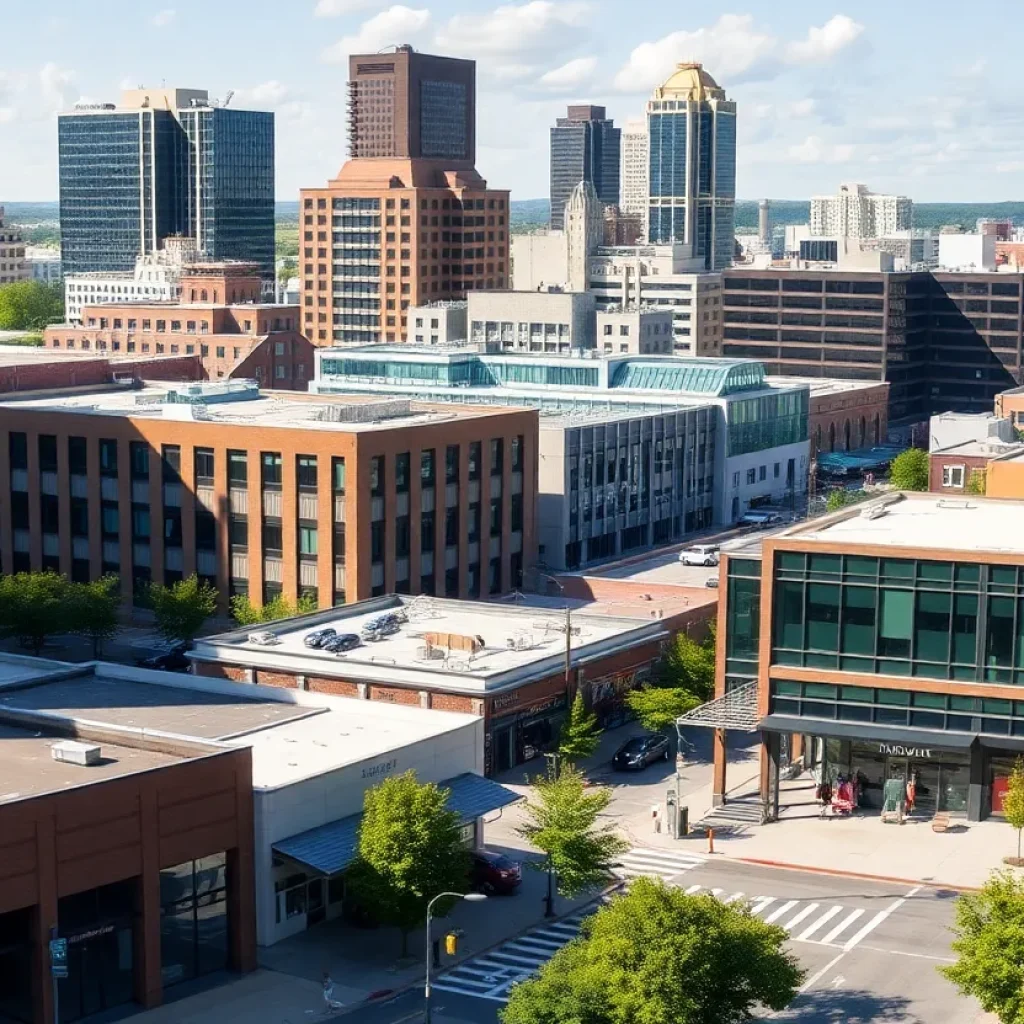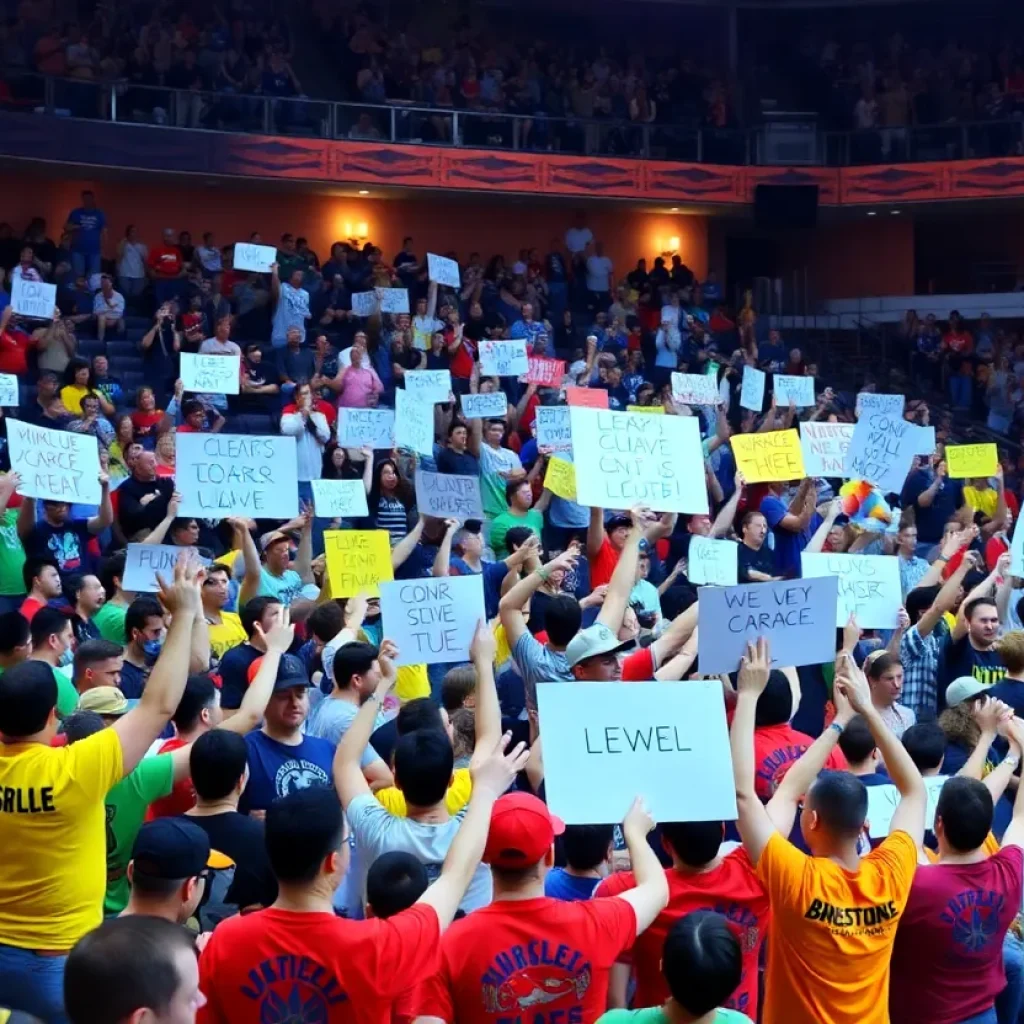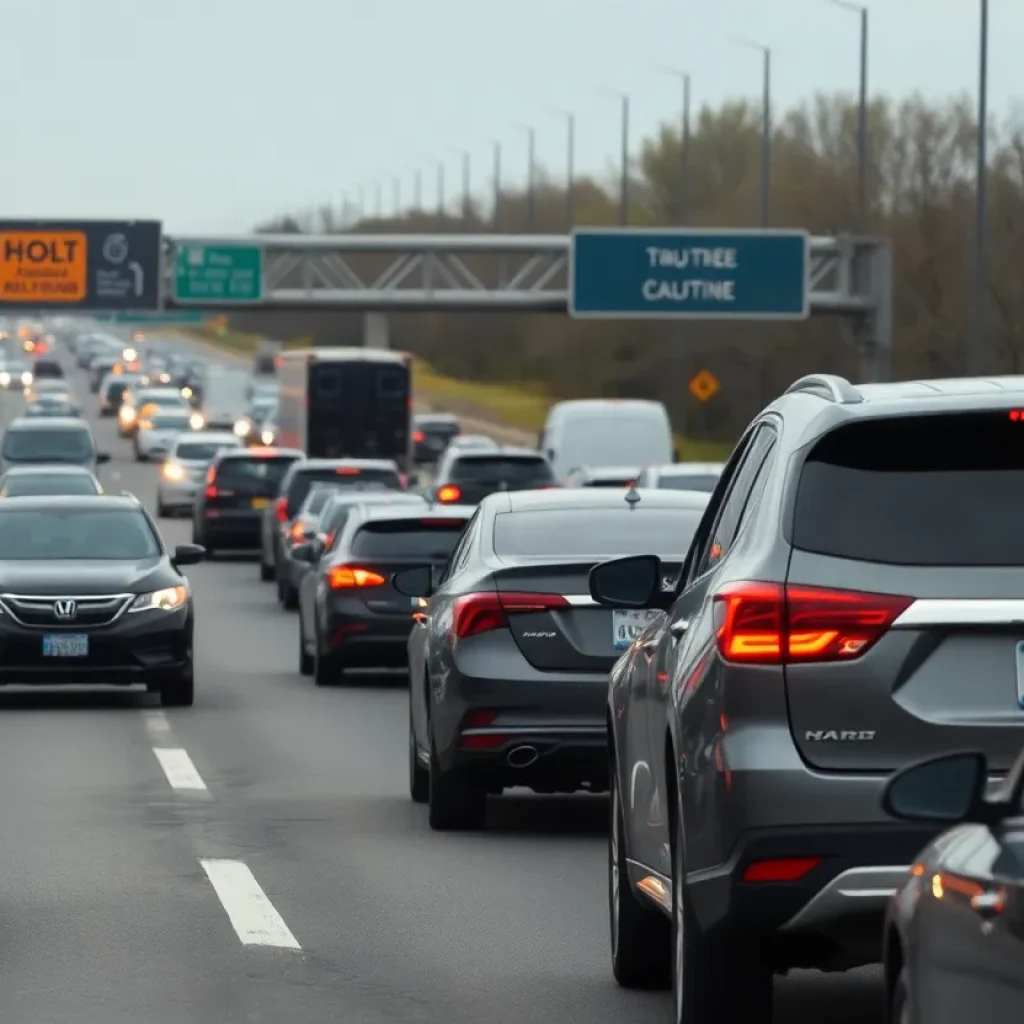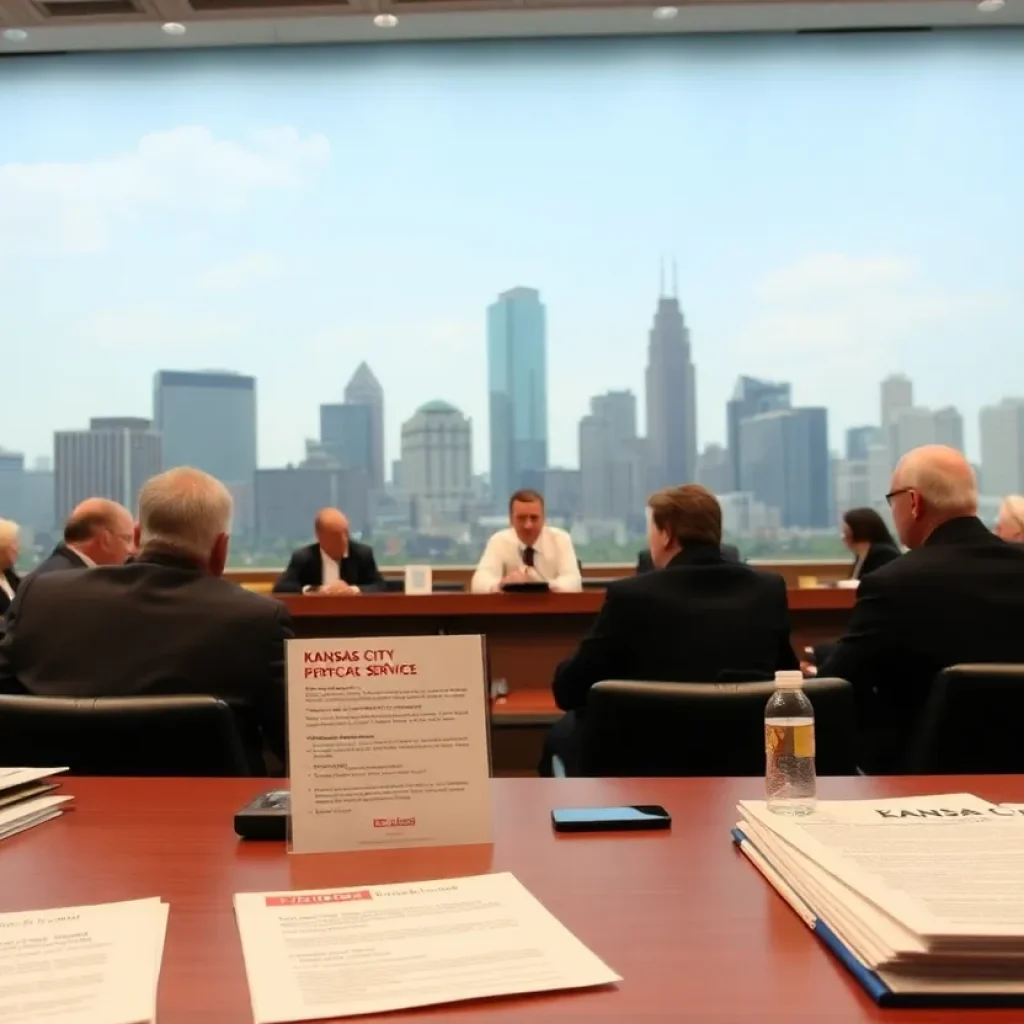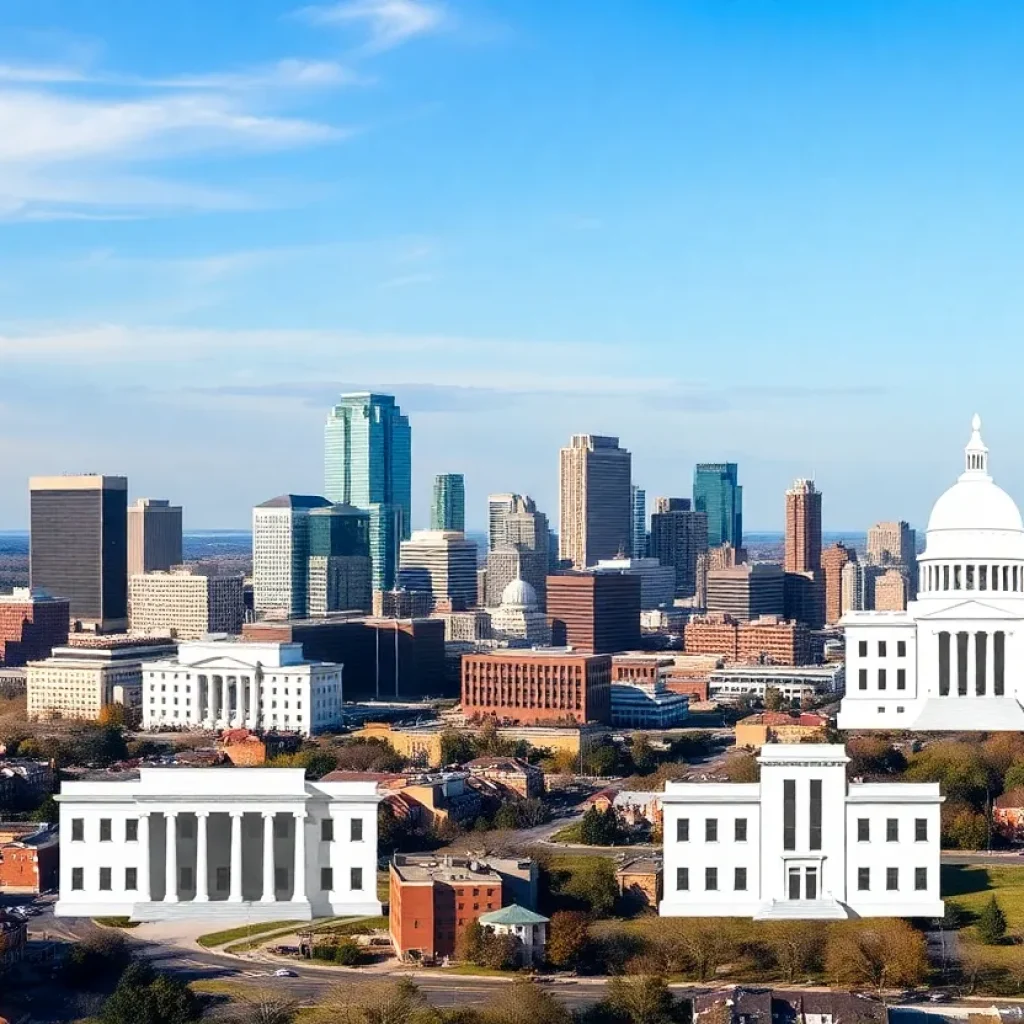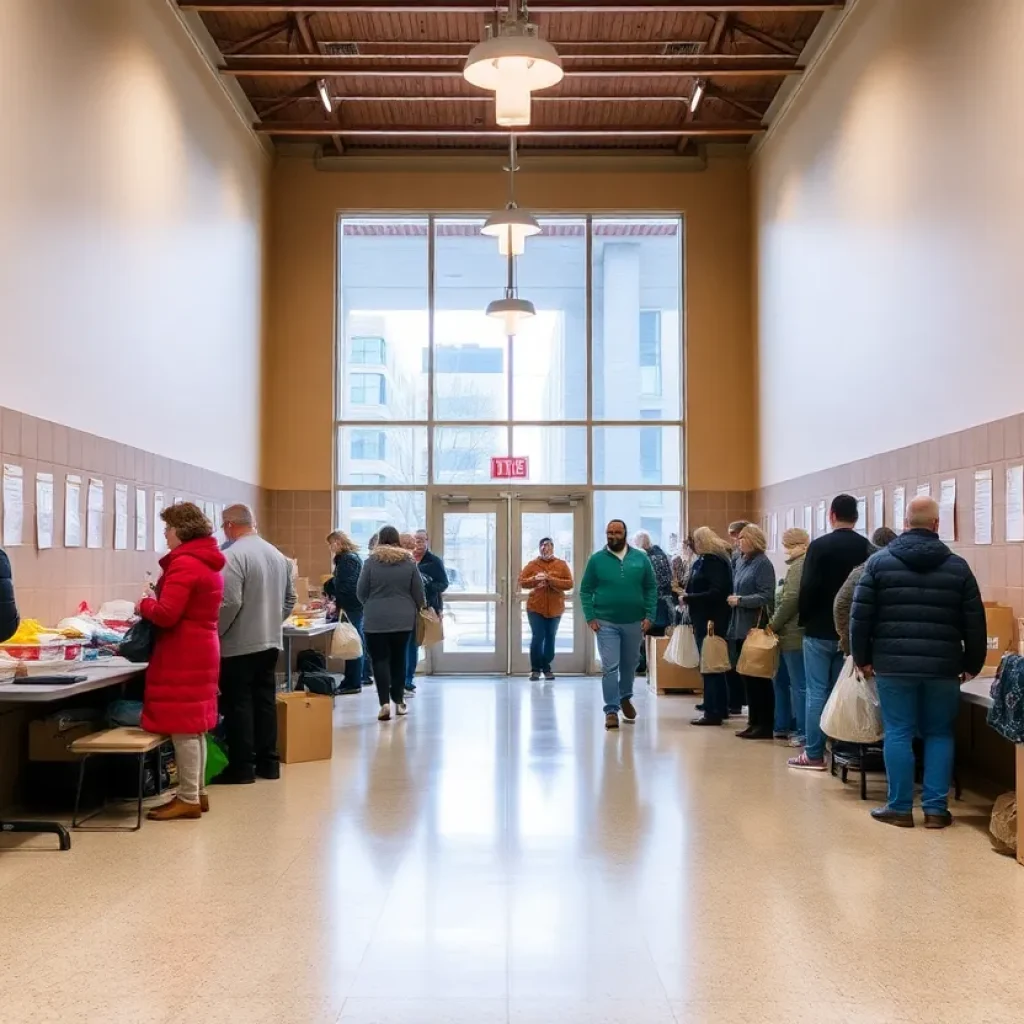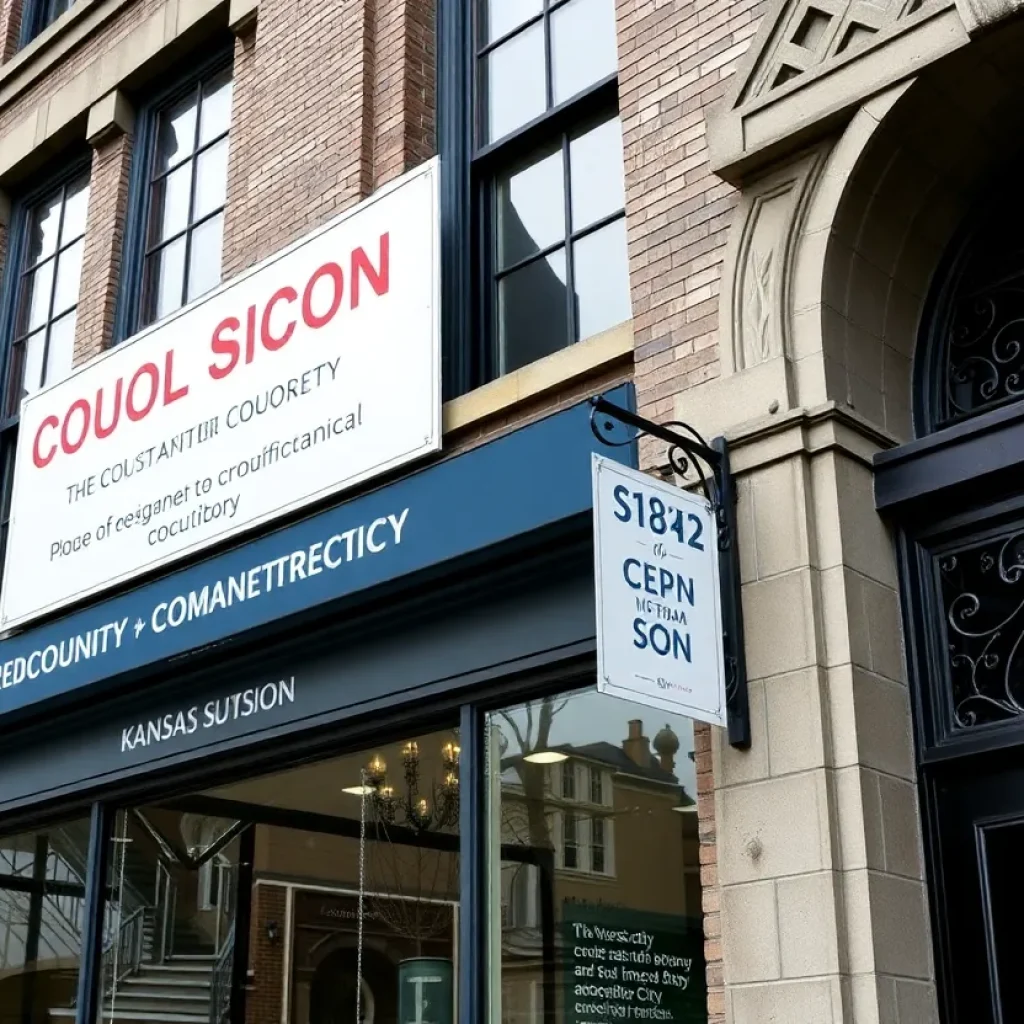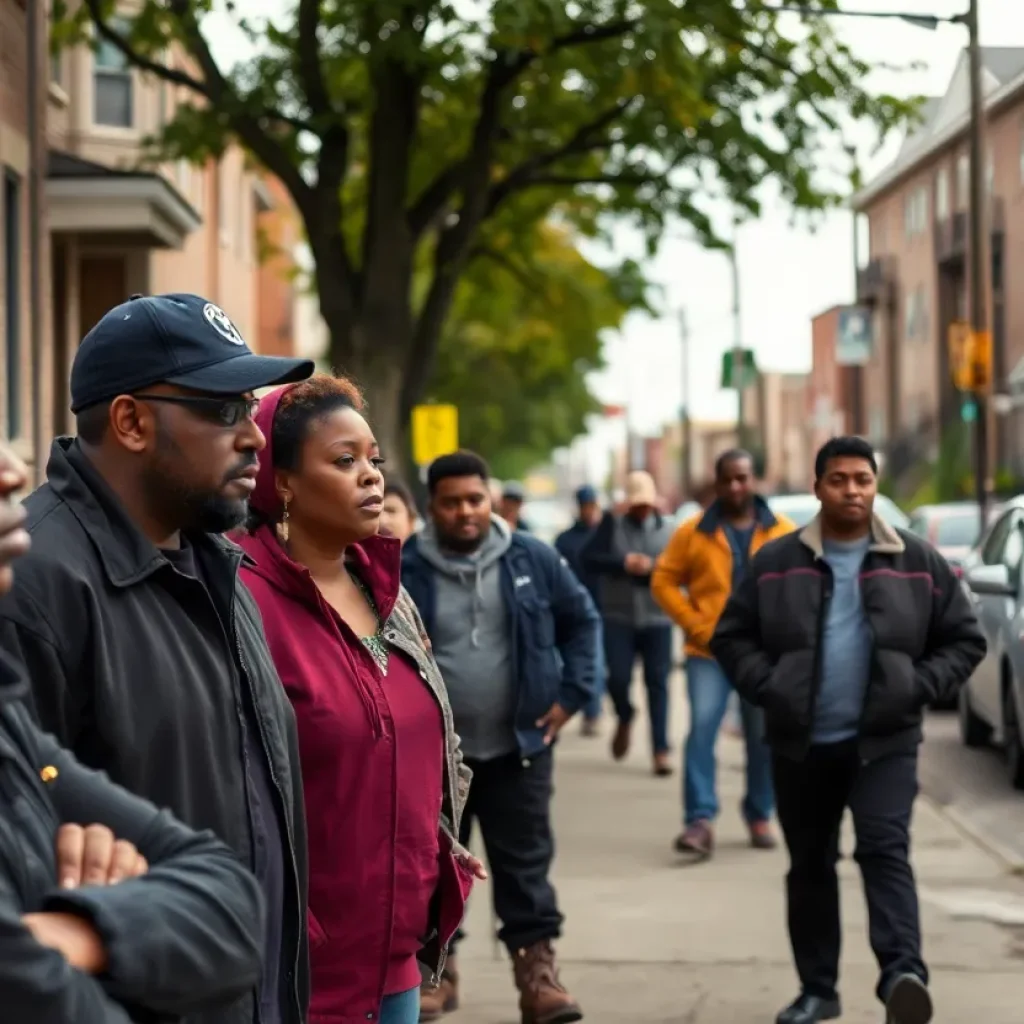Kansas City News
TOP kansas city STORIES
BREAKING NEWS
Hillsdale Lake to Face Temporarily Closures Due to Staffing Cuts
News Summary Starting May 15, 2025, Hillsdale Lake and other Kansas City District lakes will undergo temporary closures and service reductions due to U.S. Army Corps of Engineers staffing issues....
18-Year-Old Charged with Murder Following Liquor Store Shooting
News Summary Jeremiah Williamson, an 18-year-old man, faces charges of second-degree murder, first-degree attempted robbery, and armed criminal action after a fatal shooting incident at Liquor Xpress in Kansas City....
Kansas City Braces for Rainy Wednesday with Strong Storms
News Summary Kansas City is preparing for a rainy Wednesday as the National Weather Service forecasts isolated showers and thunderstorms throughout the day. In particular, areas south of Interstate 70...
Kansas City Man Charged with 2nd Degree Murder in Hit and Run
News Summary Anthony Milligan, a 55-year-old Kansas City man, has been charged with 2nd Degree Murder and Armed Criminal Action following a deliberate hit and run incident that resulted in...
Kansas City Hit-and-Run Claims Life of Pedestrian
News Summary A hit-and-run incident on 210 Highway in Kansas City resulted in the tragic death of a pedestrian on Monday evening. The driver fled the scene, and authorities are...
Kansas City Unveils ProspectUS Plan for Community Revitalization
News Summary Kansas City has partially approved the ProspectUS plan aimed at revitalizing the Prospect Avenue corridor, targeting 40,000 new residents and 15,000 new jobs. Focused on walkable development and...
BUSINESS
Kansas City Achieves Milestone with Average Wage Surpassing $76,000
News Summary Kansas City, Missouri, celebrates a significant economic achievement as the average wage in the city surpasses $76,000. This milestone, emphasized by Steven Anthony of the Economic Development Corporation,...
Amazon’s Drone Delivery Service Coming to Kansas City
News Summary Amazon is poised to introduce its drone delivery service, Prime Air, to Kansas City after receiving planning approvals from local officials. The initiative, which aims to enhance delivery...
New Family-Friendly Dining Concept Opens in Kansas City
News Summary Kansas City is set to debut a unique dining venue this fall at 131 E. 14th St., featuring three options: Jerusalem Cafe, Chick-In Waffle, and Virgin Rebel, a...
Kansas City Invests $25 Million in Workforce Development
News Summary Kansas City is investing $25 million in the Northland Workforce Development Center (NWDC), aiming to train skilled professionals to meet regional labor needs. Located at 152 Highway and...
Arabia Steamboat Museum Faces Uncertain Future in Kansas City
News Summary The Arabia Steamboat Museum, a beloved institution in Kansas City, is searching for a new location as its lease expires in November 2026. With the current owner indicating...
New Bar Audrey’s Wine + Bourbon to Open in Kansas City
News Summary Audrey’s Wine + Bourbon is set to open this fall in the Waldo neighborhood of Kansas City. Founded by Laura and Howard Turley, the bar will offer a...
Kansas City Council Supports SunFresh Grocery Store
News Summary The Kansas City Council has approved a $611,500 funding package to support the SunFresh grocery store at 31st and Prospect, aiming to prevent a food desert in the...
North Kansas City Tattoo Artist Transforms Scars into Art
News Summary Kat Farris, a tattoo artist in North Kansas City, is making a difference by turning scars into meaningful tattoos. Her work helps clients reclaim their confidence and embrace...
Kansas and Missouri Businesses Feeling Economic Pinch from Tariffs
News Summary Local businesses in Kansas and Missouri are facing economic hardships due to new tariffs and federal policy changes. Companies like the Kansas City Bier Company and local shops...
Events/What's Happening
Kansas City Unveils Vibrant Outdoor Drinking Spots for Summer
News Summary This summer, Kansas City is bustling with new outdoor drinking venues, offering everything from rooftop bars to patio lounges perfect for seasonal cocktails. Highlights include the Percheron Rooftop...
Weekend Events in Kansas City: May 1-4
News Summary Kansas City is set for an exciting weekend from May 1-4, featuring outdoor concerts, rodeos, art festivals, and cultural celebrations. Highlights include the Mobile Music Box Concert, the...
Kansas City Welcomes WWE Fans for Monday Night Raw
News Summary WWE fans packed the T-Mobile Center in Kansas City on April 28 for an unforgettable episode of Monday Night Raw, showcasing their enthusiasm with shirts, replica belts, and...
Riley Green Announces Kansas City Concert Date
News Summary Country music star Riley Green is set to perform at the T-Mobile Center in Kansas City on November 8, 2025, as part of his Damn Country Music Tour....
Kansas City’s Culinary Innovations and Community Resilience
News Summary Kansas City is experiencing a culinary renaissance while facing food insecurity challenges. Local chefs and organizations are coming together to support the community, highlighted by events like Gumbo...
Kansas City Hosts Blues Concert Narrated by Morgan Freeman
News Summary Kansas City will host an extraordinary concert featuring Morgan Freeman narrating ‘Symphonic Blues’ at the Kauffman Center for the Performing Arts on September 2-3. The Kansas City Symphony,...
Kansas City Gears Up for a Musical Extravaganza This Spring and Summer
News Summary As Kansas City prepares for a star-studded concert season in 2025, various venues will welcome an exciting lineup of performances across multiple music genres. Prominent artists such as...
Kansas City Celebrates Tech N9ne’s Sonic ID for World Cup
News Summary Kansas City is buzzing with excitement as local artist Tech N9ne has been selected to create the city’s Sonic ID for the FIFA World Cup 2026. This unprecedented...
Price Chopper Giveaway for Kansas City Residents
News Summary Kansas City residents, get excited! Price Chopper is hosting a giveaway where four lucky winners will each receive a $400 gift card. This initiative aims to foster community...
CRIME
18-Year-Old Charged with Murder Following Liquor Store Shooting
News Summary Jeremiah Williamson, an 18-year-old man, faces charges of second-degree murder, first-degree attempted robbery, and armed criminal action after a fatal shooting incident at Liquor Xpress in Kansas City....
Kansas City Man Charged with 2nd Degree Murder in Hit and Run
News Summary Anthony Milligan, a 55-year-old Kansas City man, has been charged with 2nd Degree Murder and Armed Criminal Action following a deliberate hit and run incident that resulted in...
Kansas City Hit-and-Run Claims Life of Pedestrian
News Summary A hit-and-run incident on 210 Highway in Kansas City resulted in the tragic death of a pedestrian on Monday evening. The driver fled the scene, and authorities are...
Tragic Hit-and-Run Claims Life of Pedestrian in North Kansas City
News Summary A hit-and-run incident on Missouri 210 Highway has left a pedestrian dead in North Kansas City. The vehicle responsible fled the scene, raising concerns in the community. The...
Kansas City Man Faces Serious Charges After Tragic Street Racing Incident
News Summary A Kansas City man, Cortez A. Hamilton, is facing two counts of 1st Degree Involuntary Manslaughter after a tragic street racing crash on December 30, 2024, that resulted...
Kansas City Community Grieves After Double Homicide
News Summary A tragic double homicide occurred in Kansas City, Missouri, on Saturday, April 26, claiming the lives of 19-year-old Matthew Suri and 16-year-old Maximiliano Ruiz. As local police investigate...
POLITICS
Kansas City Man Charged with 2nd Degree Murder in Hit and Run
News Summary Anthony Milligan, a 55-year-old Kansas City man, has been charged with 2nd Degree Murder and Armed Criminal Action following a deliberate hit and run incident that resulted in...
Kansas City Unveils ProspectUS Plan for Community Revitalization
News Summary Kansas City has partially approved the ProspectUS plan aimed at revitalizing the Prospect Avenue corridor, targeting 40,000 new residents and 15,000 new jobs. Focused on walkable development and...
Kansas City Council Committee Rejects IRIS Funding, Stops Operations
News Summary The Kansas City City Council committee has voted against funding for the IRIS micro transit service, leading to a suspension of operations. This decision, announced during a recent...
Major Federal Workforce Cuts Impact Kansas City
News Summary Kansas City is facing significant changes due to federal workforce cuts linked to the Trump Administration, affecting nearly 30,000 federal workers. Key agencies, including the Social Security Administration...
Kansas City Faces Homelessness Challenges Despite Major Investment
News Summary Kansas City is grappling with a significant homelessness crisis, even with over $100 million invested in housing assistance and shelter programs in 2023. Despite the presence of more...
Kansas City Faces Domestic Violence Crisis as Homicides Surge
News Summary Kansas City, Missouri, is confronting a significant domestic violence crisis, recording 12 related homicides in early 2025, matching last year’s total. This alarming trend has sparked urgent discussions...
Kansas City Housing Proposed Changes Spark Debate
News Summary Kansas City is at a crossroads as the city council weighs Ordinance 240434, which may lower energy efficiency standards for new homes. Supported by developers, this ordinance aims...
Discovering the History of West Junior High in Kansas City
News Summary The history of West Junior High, located at 1936 Summit St., reflects the spirit of the West Side community in Kansas City. This article explores the struggles, aspirations,...
Kansas City Residents Face Rising Gun Violence
News Summary Residents of Kansas City are increasingly troubled by a rise in gun violence, with recent incidents leaving families feeling unsafe in their own homes. The alarming trend has...
SPORTS
Kansas City Welcomes WWE Fans for Monday Night Raw
News Summary WWE fans packed the T-Mobile Center in Kansas City on April 28 for an unforgettable episode of Monday Night Raw, showcasing their enthusiasm with shirts, replica belts, and...
Kansas City Celebrates Tech N9ne’s Sonic ID for World Cup
News Summary Kansas City is buzzing with excitement as local artist Tech N9ne has been selected to create the city’s Sonic ID for the FIFA World Cup 2026. This unprecedented...
Action-Packed Weekend Ahead in Kansas City!
News Summary This weekend in Kansas City features a diverse lineup of events including concerts by Paul Simon and Five for Fighting, Kansas City Royals baseball games, charity workouts, family...
Kansas City Unveils the Roy Blunt Luminary Park
News Summary Kansas City has officially named its South Loop Project the Roy Blunt Luminary Park, honoring the former U.S. Senator. The park will transform Interstate 670 into a vibrant...
Kansas City Royals Gear Up for Opening Day Promotions
News Summary The Kansas City Royals are set to launch their exciting 2025 season with a special promotion at Kauffman Stadium on April 5, 2025. The first 10,000 attendees will...
Fun-Filled Weekend Events in Kansas City: April 4-6, 2025
News Summary Kansas City is gearing up for an exciting weekend from April 4 to 6, 2025, featuring a variety of activities suitable for all interests. Highlights include the return...
Weekend Events in Kansas City: April 3–6
News Summary Kansas City has a vibrant lineup of events this weekend, from theater performances like ‘Back to the Future: The Musical’ to jazz concerts and cultural festivals. With family-friendly...
Events Happening in Kansas City This Weekend: March 28-30, 2025
News Summary From art exhibits to thrilling sports events, Kansas City offers an exciting weekend from March 28-30, 2025. Highlights include the Orchid Delirium exhibit, Kansas City FilmFest, Royals baseball...
Kansas City Royals Fine-Tune Roster Ahead of Season
News Summary As Opening Day approaches, the Kansas City Royals are making strategic roster adjustments. They have sent Nick Pratto and Nelson Velázquez to Triple-A Omaha while adding veteran Mark...


